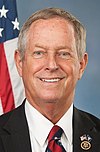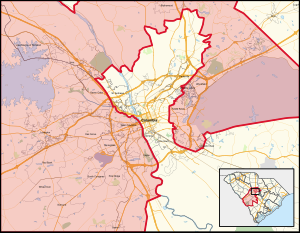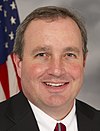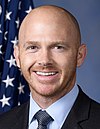Since Arizona became a U.S. state in 1912, it has sent congressional delegations to the United States Senate and United States House of Representatives. Each state elects two senators to serve for six years, and members of the House to two-year terms. Before becoming a state, the Arizona Territory elected a non-voting delegate at-large to Congress from 1864 to 1912.

These are tables of congressional delegations from Minnesota to the United States House of Representatives and the United States Senate.
These are tables of congressional delegations from North Carolina to the United States House of Representatives and the United States Senate.
Since Florida became a U.S. state in 1845, it has sent congressional delegations to the United States Senate and United States House of Representatives. Each state elects two senators to serve for six years, and members of the House to two-year terms. Before becoming a state, the Florida Territory elected a non-voting delegate at-large to Congress from 1822 to 1845.
Since Kentucky became a U.S. state in 1792, it has sent congressional delegations to the United States Senate and United States House of Representatives. Each state elects two senators to serve for six years, and members of the House to two-year terms.

These are tables of congressional delegations from Ohio to the United States House of Representatives and the United States Senate.
Since Colorado became a U.S. state in 1876, it has sent congressional delegations to the United States Senate and United States House of Representatives. Each state elects two senators to serve for six years, and members of the House to two-year terms. Before becoming a state, the Colorado Territory elected a non-voting delegate at-large to Congress from 1861 to 1876.
Georgia became a U.S. state in 1788, which allowed it to send congressional delegations to the United States Senate and United States House of Representatives beginning with the 1st United States Congress in 1789. Each state elects two senators to serve for six years, and members of the House to two-year terms.
Since Idaho became a U.S. state in 1890, it has sent congressional delegations to the United States Senate and United States House of Representatives. Each state elects two senators to serve for six years, and members of the House to two-year terms. Before becoming a state, the Idaho Territory elected a non-voting delegate at-large to Congress from 1864 to 1890.
These are tables of congressional delegations from South Dakota to the United States Senate and United States House of Representatives.
These are tables of congressional delegations from Nevada to the United States Senate and United States House of Representatives. Nevada's current U.S Senators are Democrats Catherine Cortez Masto and Jacky Rosen. Nevada has been allotted 4 seats in the U.S House of Representatives since the 2010 census; currently, 3 of the seats are held by Democrats, and the last seat is held by a Republican.

These are tables of congressional delegations from Nebraska to the United States House of Representatives and the United States Senate.
These are tables of congressional delegations from Maine to the United States Senate and United States House of Representatives.
These are tables of congressional delegations from Tennessee to the United States House of Representatives and the United States Senate.
These are tables of congressional delegations from Oregon to the United States Senate and United States House of Representatives.
These are tables of congressional delegations from New Hampshire to the United States Senate and United States House of Representatives.
Since Kansas became a U.S. state in 1861, it has sent congressional delegations to the United States Senate and United States House of Representatives. Each state elects two senators to serve for six years, and members of the House to two-year terms. Before becoming a state, the Kansas Territory elected a non-voting delegate at-large to Congress from 1854 to 1861.

These are tables of congressional delegations from Michigan to the United States House of Representatives and the United States Senate.

These are tables of congressional delegations from Missouri to the United States House of Representatives and the United States Senate.

There are currently seven United States congressional districts in South Carolina. There have been as few as four and as many as nine congressional districts in South Carolina. The 9th district and the 8th district were lost after the 1840 census. The 5th district and the 6th district were also briefly lost after the Civil War, but both had been regained by the 1880 census. Because of the state population growth in the 2010 census, South Carolina regained its 7th district, which had remained unused since the Civil War.






















